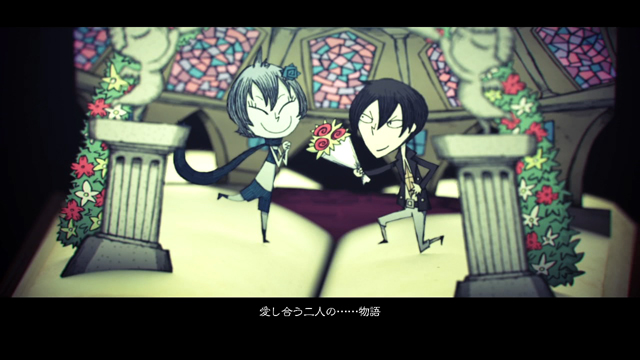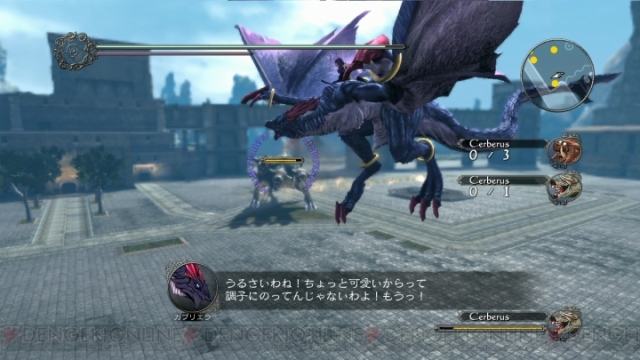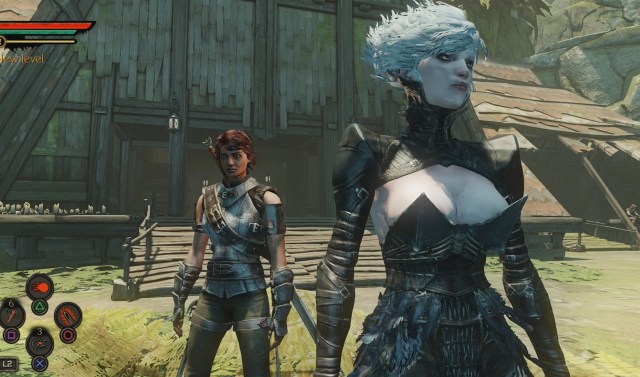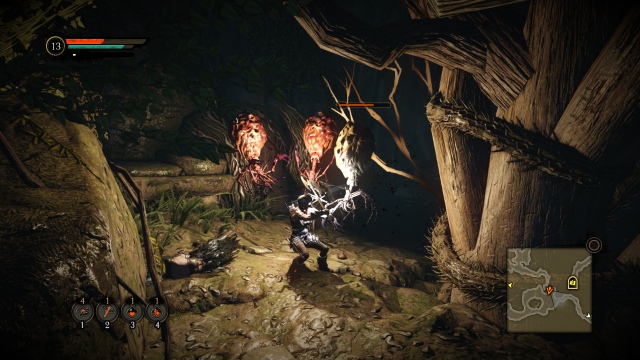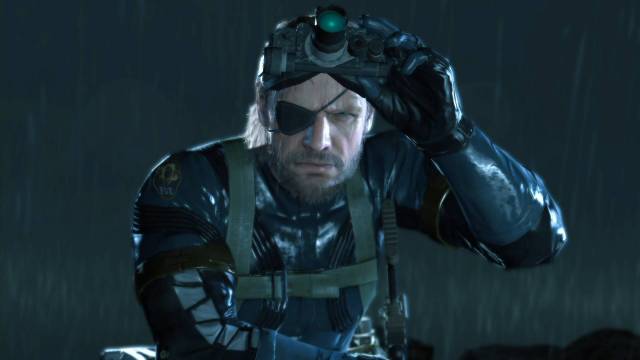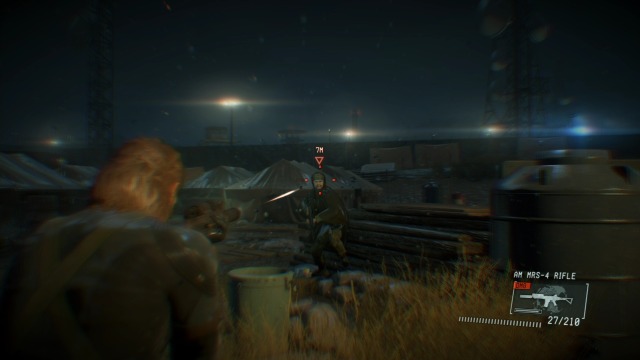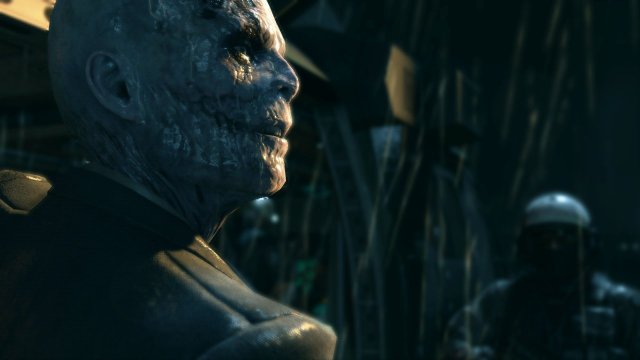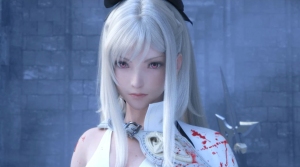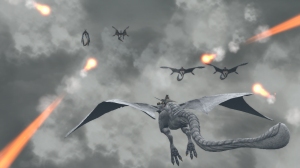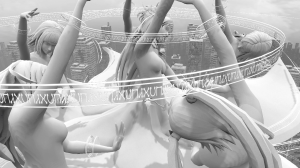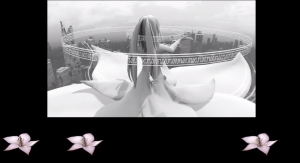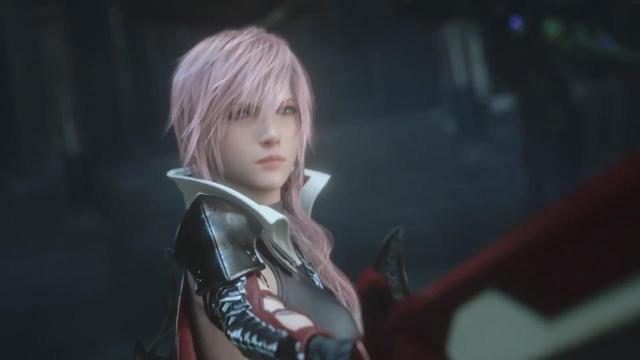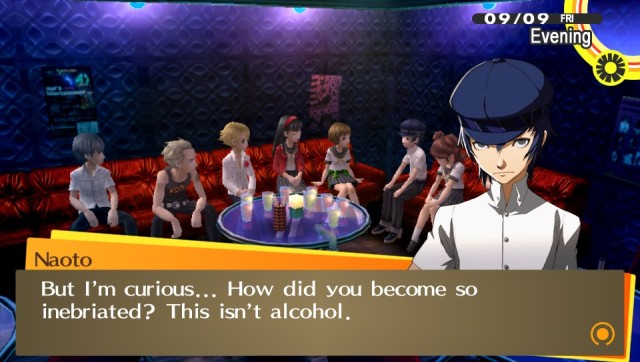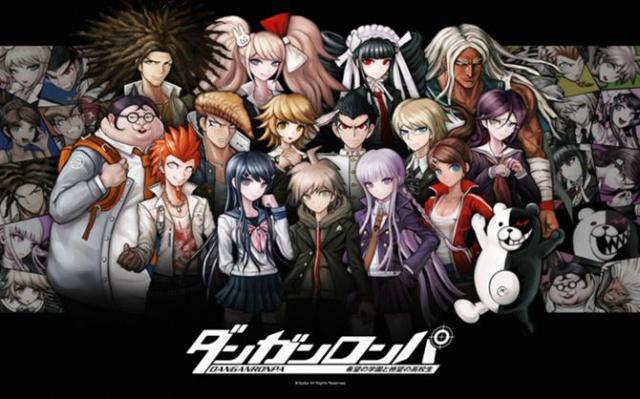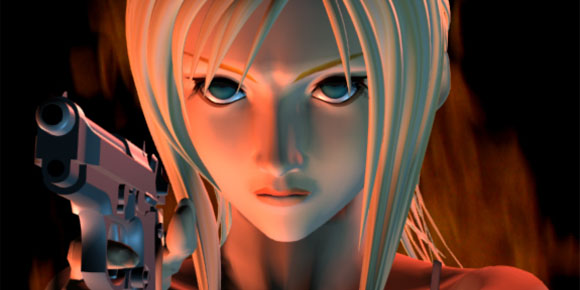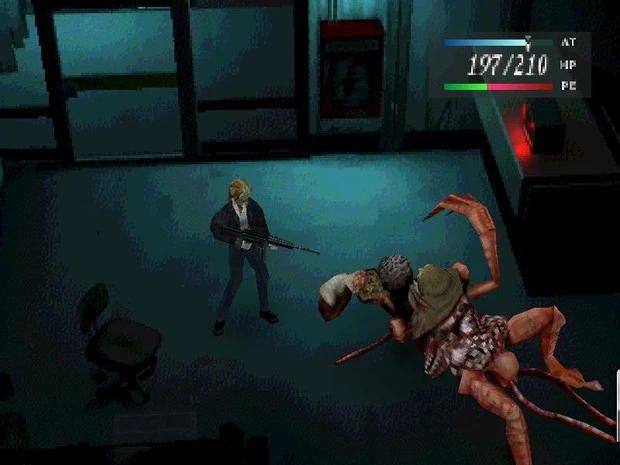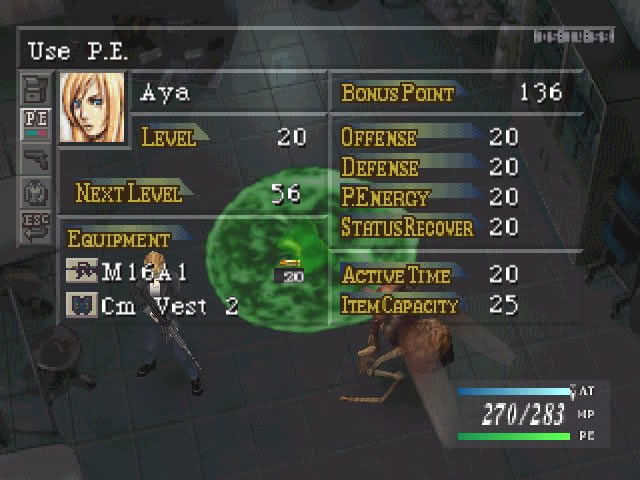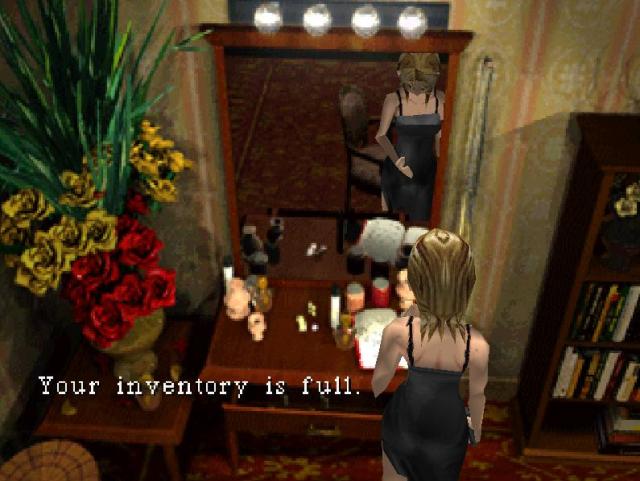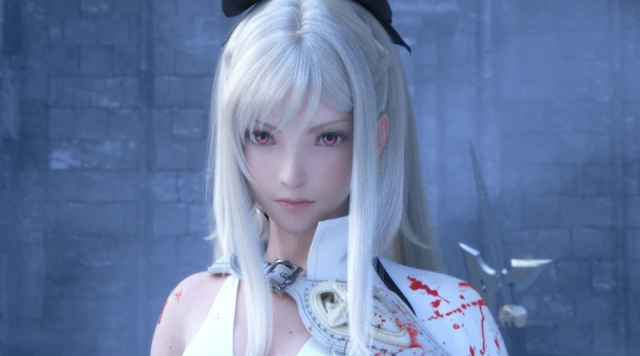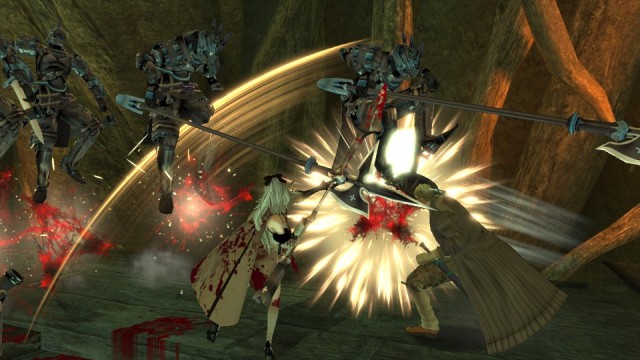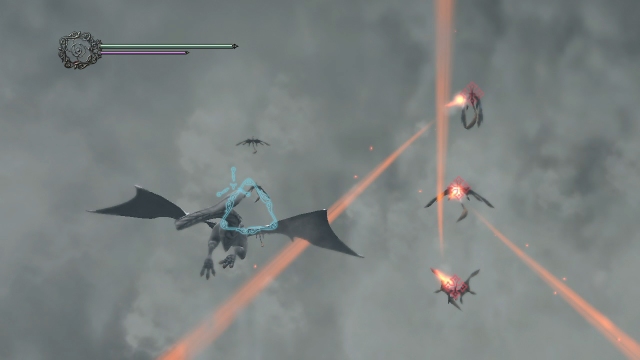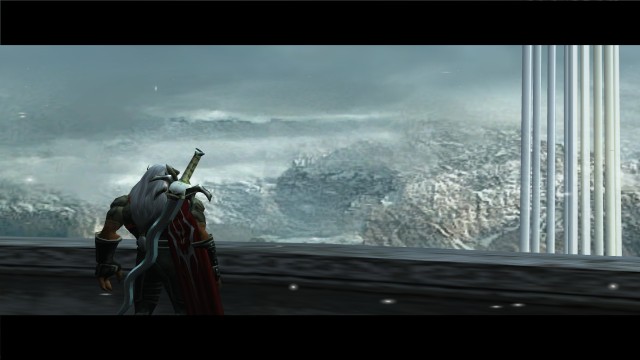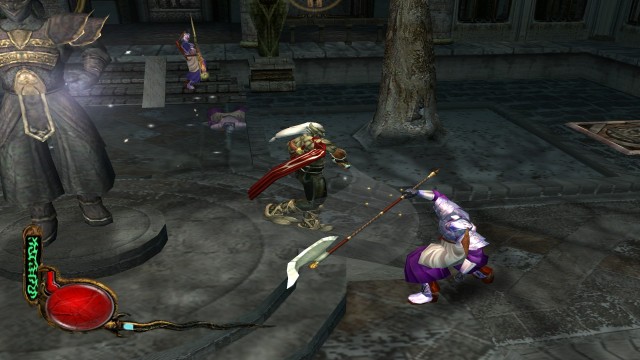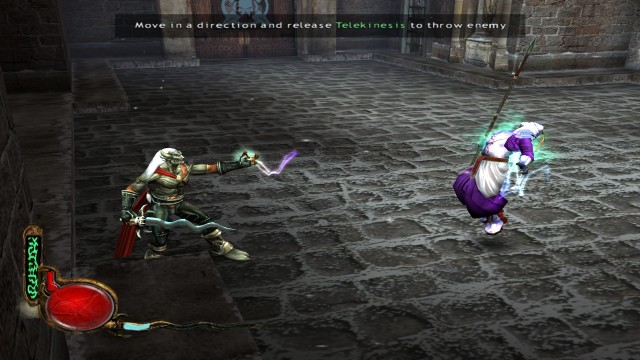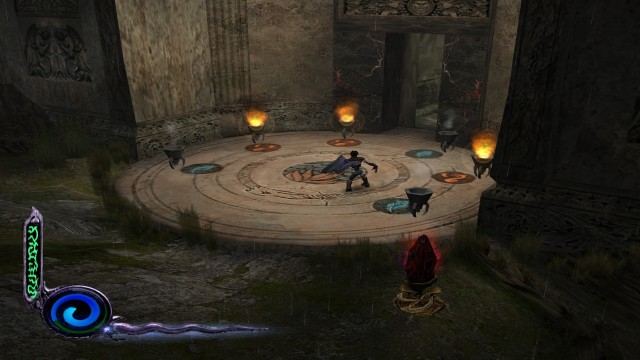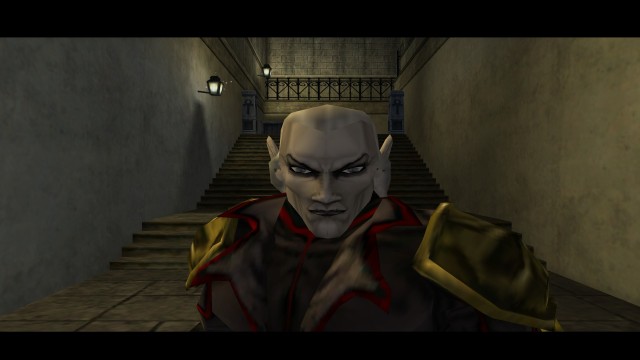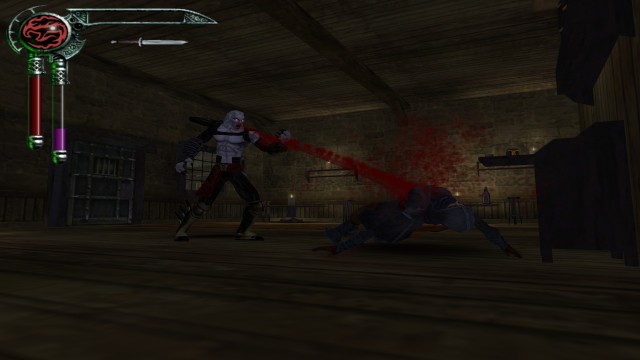In the month of October, I decided to play a bunch of horror games: what better way to celebrate the spookiest month of the year, after all? My mix included both games I’ve finished previously and a sizeable number of games I’ve never played before. Since I got the chance to experience so many new games, I figured I would put together this blog detailing my thoughts on each to give other people a chance to learn about games they might not have ever heard of. What follows is a “brief” summarization of each game and how I liked or disliked it. Sorry about the length!
CLOCK TOWER (PS1)
The “first” Clock Tower is actually the second for non-Japanese gamers, a sequel to the original SNES Clock Tower that never released outside its home country. The main character of that game, Jennifer, returns a shaken person after her experiences with the terrifying Scissorman. She is finally learn to cope with things when he appears again, cutting down victims left and right. All the players in the story desperately try to understand what the Scissorman really is and how to stop him. The story is simple and predictable but does enough to keep you going from stage to stage, learning the mystery of the Scissorman. You can actually play as one of two characters, Jennifer or her guardian Helen, and each character has a very different path through the game with different levels. The endings also differ, with a shocking five per character that are all surprisingly different. It gives great incentive to go back and try for another.
Gameplay-wise, Clock Tower is also quite intriguing. It most resembles an adventure game from the 90s, with controls and that work shockingly well on a gamepad and a well-designed UI. You click to move your characters around, grab objects from the environment, or use things from your inventory. When Scissorman starts his hunt, you can’t really fight him; your only options are to either hide or use an environmental object to stun him temporarily. For this reason, there is a decent amount of tension from his sudden appearances, particularly when all you can hear are those clanging scissors of his. In certain areas, where you don’t know the hiding spots yet, it can be quite intense to try and get away before he catches you. I was extremely impressed with Scissorman’s effectiveness, although the few times he is portrayed as silly did hurt my impressions of him a bit. All in all, I recommend this game highly–it still plays quite well for its age.
CLOCK TOWER 3 (PS2)
Clock Tower 3 features a complete tonal shift from its predecessor, although maybe not intentionally. You play as Alyssa, a girl who just returned home after a long absence to find her mother missing, and must travel through time (I’m not shitting you) to learn the truth behind her disappearance. You also find out later that Alyssa is a Rooder, essentially a “magical girl” who can fight the evil creatures that she encounters throughout time. The story is pretty absurd, as you can probably tell, but the cutscenes are by far the weirdest part of the game. They have this frantic energy to them, characters running about in a panic and bumping into each other/anything in the area, that feels just so damn ridiculously slapstick. I could not take it seriously for this reason, laughing my ass off every time a cutscene played and the characters went berserk. Furthermore, it has some very strange ideas of what makes a spooky character, including reimagining Scissorman as a pair of Oriental twins with bizarre accents, something I wouldn’t have believed if I hadn’t seen it for myself. These scenes have to be seen to be believed.
Gameplay is quite different from the original as well. It takes a heavy note from games like Resident Evil and Silent Hill with that third-person exploration style (minus the fixed camera angles). You wander about, finding items that are used to solve puzzles or help you deal with enemies. The chase elements of prior games also factor in here, forcing you to run and hide to avoid death. I really like the idea here, with your health instead being represented by a panic meter that forces you into a blind run, tripping all over your feet and having a hard time getting away, if it depletes. It feels a bit clunky in certain areas, particularly those where you don’t have enough room to get away and hide safely before the enemy gets you, but is still quite interesting. There is a second part to the gameplay, however, and this is where things get really bad. These are forced combat sections (already a no-no, in my mind) that are unlike anything I’ve ever seen in the genre. You have a bow and are forced to charge shots that will snare your foe, allowing you to pepper him with further shots or eventually use a huge power shot. These sections are tedious, lengthy, and frustrating–particularly the final boss fight. For as much as I enjoyed the main gameplay portions, these fight sequences ruined the experience for me. Not worth a play, but I advise you check out some of these ridiculous cutscenes for yourself–they are the “best” part of Clock Tower 3.
NEVERENDING NIGHTMARES (PC)
Neverending Nightmares was one of the two newer games I played for October (the other being Alien: Isolation, discussed below) and easily the most atmospheric. The setup is extremely simple: you play a guy who keeps waking up from a nightmare, slowly sinking deeper and deeper into his psychosis. The thing that Neverending Nightmares absolutely nails is the presentation. The handdrawn artstyle is striking and unlike anything else I’ve ever seen, giving the whole thing a very eerie feeling right off the bat. Combine that with some very unsettling imagery–including a few moments that had my stomach turning quite literally–and an ominous soundtrack that sets the mood and I could not play this game for more than 20-30 minutes at a time without wanting to rip my headphones off and turn on a light. It’s a great experience to just sit back and let sink in, even though you may not actually want to let it do so.
Unfortunately, it really flounders in the gameplay department. You spend the entirety of your time wandering about these creepy locales, trying to figure out the way forward. There are some very light puzzles, like needing a candle to progress through a dark area or learning how to avoid certain enemies, but you mostly just tread forward for minutes on end. Things do happen on a regular basis, creeping you out, but there was never enough happening in most of the sections to keep me from feeling at least a bit of tedium. Add in a short length and some reused design (understandable but still annoying) and it can be a bit hard to recommend Neverending Nightmares for most people; it’s a fantastic realization of the developer’s nightmares, but it’s likely that the eeriness or the tedious design will get to you before you can finish it.
THE SUFFERING (PS2)
The Suffering was a huge surprise for me. I had heard about it for years but never actually seen it for myself. I knew it was revered when it came out in 2004, but I didn’t think it would hold up. For the most part, I was right; however, in the atmosphere and design department, it is still an astoundingly good game. You play as Torque, a man on death row for killing his ex-wife and children. As soon as he arrives, things go insane and creatures begin killing everyone in sight. These creatures are fantastically designed, reflecting the ways that they were executed in grotesque manners that reminded me instantly of Silent Hill design. There’s a great sense of atmosphere here too, with eerie sound effects, clever jump scares, smart twists on classic horror cliches, and the (now played out, but still well-executed) idea that maybe this is all in the protagonist’s head. If the rest of the game were as sharp as the story and creature design, I would have been hooked.
Unfortunately, the gameplay just didn’t hold up. This was the first game of the month that I didn’t actually play through, stopping after just a few hours. The gameplay is your typical third-person melee + shooter game from the era, complete with annoying level design, hunting for keys, and awful platforming. After just a short time, I couldn’t stand actually playing it anymore, the design much too dated for my tastes. It would have been a hell of a slog to make it through, likely requiring me to consult a FAQ to avoid losing my sanity–thematic for the game in question, but not practical or time well spent. Since I had so many other games to play, I opted to stop and keep my initial strong opinion of it alive.. Give it a try if you think you can handle the old-fashioned gameplay; there’s a lot to like here, especially for fans of psychological horror.
SILENT HILL 4: THE ROOM (PS2)
This was the last Silent Hill game I hadn’t played to completion, so I made sure to include it on my list for this year. What I found was a very interesting, if flawed, game that was hard to compare favorably to amazing classics like SH2 and Shattered Memories. Big surprise, I’m sure. You play as Henry Townshend, a man who has been trapped in his apartment for several days. That all changes when a mysterious hole appears in his bathroom wall. He crawls through it, hoping to escape, and finds himself trapped in strange alternate dimensions where his fellow captives keep dying. He must solve the mystery in order to finally escape and return to his life. I was rather underwhelmed with the story at first and thought it just got worse as it went. Like Silent Hill 3 before it, it relies too much on trying to tell a story about an old serial killer and a ritual to end the world instead of focusing more on the nature of its characters, something that has never been the series’ strength. There are some good moments, particularly when the game fucks with you in the assumed “safe” place of the apartment, but I thought it was quite rough overall.
The gameplay is much what you would expect if you’ve played other games in the series, particularly SH3 which this game is most like. You wander around various creepy environments, fighting enemies and finding key items for puzzles, before fighting the boss for the area and returning to your apartment. The only major changes come in the combat, which includes charged attacks for more damage and certain unkillable enemies that must be impaled with special swords to truly “kill;” otherwise, it is nearly identical to past games in the series. As I noted briefly above, the apartment stuff is some of the most interesting stuff in the game, transitioning to first-person and slowly trying to mess with player expectations later on. I never felt like it went far enough, but it was certainly a great twist that should be utilized in more horror games. In the end, I’m glad I played it and filled out the rest of my SH knowledgebase, but I would much rather suggest/play another SH game over this one if given the choice.
PROJECT ZERO 2: WII EDITION
As a huge fan of the Fatal Frame series, I also wanted to poke around the games I hadn’t played there: the never-released-in-the-U.S. Wii version of FF2 and Fatal Frame 3 (which I talk about in greater detail below). For those of you who are unfamiliar with Fatal Frame 2 (or Project Zero 2 in Europe), it features two twin Japanese girls who find themselves trapped in a haunted Japanese village. In this village, twins were tasked with a certain horrible ritual (which I don’t want to spoil here) in order to appease an evil spirit. One of these rituals went horribly wrong and forever changed the village, trapping anyone who wandered past its gates. You play as one of the twins, Mio, as you try to save your sister Mayu and escape the village. To this day, many people still hold this game as one of the scariest games they’ve ever played. I personally don’t think the creepiness holds up, as I can easily play it now with no fear, but it still commits to its intense themes in a way that few horror games manage to do. There’s plenty to find creepy here–spirit stones featuring fairly well done imitations of the fear and terror various people felt when they died, recounting of the horrible things that happened in the village’s past, a GREAT section that forces you to explore without your camera to fight back–but I guess I’m just too familiar with it now (having finished it three times) to be scared by it anymore. Even the new visuals don’t do much to help in that regard. If you haven’t played it, however, you should definitely give it a shot.
The poor thing about this version of Fatal Frame 2 is all the gameplay changes made for the Wii version, which I noticed easily having played the original directly before playing this. I hate pretty much of all of these changes and had to stop playing after just an hour as a result. Let’s note the big ones to show what I mean. The map features objective markers and very clear pointers as to where you need to go, removing much of the exploration and freedom I enjoyed in the original version. Picking up items requires you to hold now a button for a set period of time, during which time ghost hands may suddenly grab at you and force you to let go or take damage. The dialogue is all re-recorded by British voice actors, which I just couldn’t take seriously in this context. Admittedly, this won’t be something that bothers everyone. Finally, and most egregious of all, are the AWFUL controls this version has. Instead of using the Wiimote to just point a cursor around the screen for aiming, it instead uses tilt of the controller. This feels extremely inaccurate and I could never get used to it, getting my ass BEAT by even early enemies like the Drowned Woman. All of this comes together to make a version of Fatal Frame 2 that looks better but is inferior in every other way. Considering that the original is available on PSN as a Classic for just $10, you have no excuse for playing this version.
RULE OF ROSE (PS2)
Rule of Rose is a fairly obscure PS2 horror release, likely due to the fact that it wouldn’t have even come out here if not for Atlus picking it up and publishing it after Sony declined to do so. It is one of the rarer horror games of this era; as such, I didn’t know much about it and knew I had to play it. Rule of Rose has an interesting storybook style, textually narrating bits of the story as if they have happened in the past. The actual plot deals with a young woman named Jennifer who somehow finds herself on a strange airship run by a group of devious young girls who have made their own club called the Red Crayon Aristocrats. The story has a very Lord of the Flies feel, where kids have created their own idea of adult society, complete with class warfare and forced service. It’s unlike anything I’ve seen in a game, focusing on the terrible things children might do without adult supervision. Your character, even though she is much older than the children, still gets bullied and jerked around by the younger girl characters. It’s a shockingly dark game at times, especially if you read between the lines and understand what is actually going on, with some very potent imagery and plot points to explore. It’s one of those games I want to play again just to get a deeper understanding of the intricacies of the story, something I wouldn’t have expected from this game I’ve never heard anyone talk about..
Where it falls apart, as horror games so often do, is in the gameplay. There are some interesting ideas here, such as having any dropped items immediately return to your item box to be retrieved later. The most notable of these ideas is your dog companion named Brown (complete with some adorable voice samples of your character calling his name) who can sniff any item in your inventory and find items related to it. This is the crux of the exploration gameplay, letting you follow Brown as he finds the next important story item. Unfortunately, this also makes the game very easy to progress through and extremely repetitive, following what is essentially a waypoint on your screen for minutes at a time. The truly awful part, however, is the poor combat system. It is extremely simplistic, hard to control, tedious, and frustrating as hell. There isn’t much of it, but when the game forces it on you, it’s hard not to want to shut the game off in frustration. The “boss” fights are pretty bad too, such as one in particular that took me nearly fifteen minutes of wondering if I was doing something wrong before I completed it. Sadly, these gameplay quirks hinder what is otherwise a fantastically creepy story, one I would still recommend seeing even with these gameplay hindrances. Good luck tracking down a cheap copy, though.
HAUNTING GROUND (PS2)
Haunting Ground is another relatively unknown survival horror game from the same late-PS2 era (2005-2006) as Rule of Rose. In this game, you play as Fiona, a young woman who last remembers a car accident that killed her parents. She wakes trapped in a cell in a strange place and quickly escapes, barely clothed, to find a strange mansion inhabited by even stranger characters. She explores the mansion, slowly piecing together the mystery of her accident and why she has been brought here. The story in Haunting Ground is all over the place, with each individual character having his or her own motivations that barely relate to the others’. Some of these motivations are truly fucked up, such as a man who looks like Fiona’s father and wishes to use her womb in some ritual to be reborn as a powerful entity, while others are just nonsensical or ridiculous. There were multiple characters I wanted to know more about and others that just felt like a waste of time, with the game focusing inconsistently on all of them and not really explaining anything. On the whole, the story is quite forgettable with only a few standout moments.
What are the odds of two survival horror games on the same platform both having a dog partner with special mechanics? Haunting Ground also features a dog (named Hewie, with similarly adorable voice samples for calling him) but entirely different mechanics. The right stick essentially operates as a command stick for Hewie, telling him to attack or look for items in certain sequences or to follow or hide in others. He’s also the best weapon to use against the various pursuers you encounter, as he can slow them down to give you time to hide. Unfortunately, Hewie is extremely unreliable at first, as the developers put in a trust mechanic, where you praise him for doing good things and scold him for doing bad things, that they probably thought was amazing but is just frustrating. It takes nearly half the game before he learns to do things reliably and even then, his AI gets stuck quite often. Considering you need his help to progress several times in the game, this is unfortunate. Those pursuers I mentioned above are also immensely frustrating throughout the game for one main reason–they never leave you the fuck alone. Once one appears, you are forced to hide and wait for them to leave, as you cannot do any puzzles or major story beats until you are alone. The ridiculous thing is that it can sometimes take several minutes (10+) for them to finally get tired of looking for you and actually walk away. The game tries to fool you and make you think they are gone, having them leave the room when instead they just come right back and prolong things even further. This part of the game made an otherwise decent Silent Hill/Resident Evil clone (in terms of gameplay) extremely frustrating and tedious. For these reasons, I suggest reading about some of the story of Haunting Ground and not actually playing it.
ALIEN: ISOLATION (PS4)
Many of you might actually be familiar with this title, considering it released in the month of October. I wasn’t originally planning to play it, expecting nothing special to come of another Alien game. Boy, was I wrong. For those of you who don’t know, Alien: Isolation places you into the shoes of Ripley’s daughter, Amanda, as she tries to discover what happens to her mother. The flight recorder of the Nostromo, the ship from the original Alien film, has been recovered and she tags along to find out what it says about her mother’s disappearance. As you might expect, this leads to another Xenomorph outbreak on the station that contains the flight recorder and all hell breaks loose. The story is extremely basic, mostly serving to get Ripley to the station with the creature, and doesn’t do much throughout the game’s length. It also ends in one of the worst endings I’ve seen in a game in quite some time, feeling like something the developers tacked on the day before shipping the disc out to consumers. It doesn’t really matter that the story is so hackneyed, however, as it nails the atmosphere of the Alien universe. The game really feels like the 70s view of science fiction, complete with big CRT monitors and dot-matrix displays everywhere. This alone makes the game worth seeing.
Gameplay-wise, Alien: Isolation is shockingly strong as well. It is very much a stealth game of the trial-and-error variety, as Ripley is very weak and not well-armed. You get the iconic motion detector to help you track enemy movements, hiding in vents and lockers to avoid contact with your foes. This kicks into high-gear once the Xenomorph comes into play and creates some of the best horror tension I’ve ever seen in a video game. Stealth with the other enemies is rewarding as well, but it feels much more rote and standard when compared to sneaking around the titular Alien. The developers nailed the feel of the creature, making it menacing and unpredictable in ways that feel unfair but necessarily so. Some of these sections, lengthy and without a save point in the middle, took me nearly 30 minutes due to a mixture of fear for the creature and not wanting to make a mistake and start over. It’s fantastic but definitely not for everyone, particularly those who don’t have patience for replaying sections over and over to find the correct way through. It’s also worth noting the variety of minigames to open doors and hack terminals, featuring a great physicality that I would assume such actions would require. My one complaint with the game was with its extreme length (15-20 hours), including a few sections that were very frustrating and/or poorly explained (but I can’t note without spoiling something). Still, this is easily the best Alien game to date and is worth playing for any fans of tense horror games.
FATAL FRAME III: THE TORMENTED (PS2)
Fatal Frame III is the last of the series to come to the U.S. and Europe (at least, at the time of this writing). I decided to play it to fill out my knowledge of the series, having completed both I and II previously. Fatal Frame III puts players in the role of Rei, a woman whose fiance was killed in a car accident. She is still trying to get over his death and takes a job (as a photographer, fittingly) at a creepy old manor. During this trip, she sees what she think is her dead fiance and experiences a vision. That night, she has a dream about the infamous Manor of Sleep and is touched by a tattooed woman, branding her with that same tattoo in real life. Every night, the tattoo spreads, threatening to overtake both her body and her sanity. The story here is much deeper than it was in past games, even referencing events and characters from both of those previous games. It’s as creepy as I and II, at least I didn’t think so, but it still manages to pack in a lot of eerie moments and messed-up ideas. There’s also an interesting theme of survivor’s guilt running throughout, with several characters losing themselves in their loss and longing for dead relatives and loved ones. I wish they had focused on this more, as it could have given the story more of an thematic impact. If you’ve played a Fatal Frame game before, you likely know where the story will end up, but there’s still a lot to find interesting about this game’s interweaved events.
In terms of the gameplay, Fatal Frame III makes a lot of changes to the formula. Most notable are two big changes. You alternate between waking reality and the dream world, giving you a bit of downtime in between chapters. You can use this time to read books on events you encountered in the dream, have your assistant research various people and things, and develop special pictures you take while sleeping. The game also does a bit of the Silent Hill 4 trick where it later messes with you by introducing creepy things into the reality sections, a neat trick that is much better executed here. The other notable change is the three playable characters, each with their own strengths and skills. I have a few huge problems with this. One, the upgrades and items are separate for each character, meaning you must spread yourself quite thin to survive. Two, the paths through the house are blocked at random for different characters, forcing you to take longer, dangerous paths. This is just poor game design in my opinion, limiting the player’s ability to feel smart and clever for taking a good path. Three, and most egregious, one of the characters is AWFUL at fighting ghosts, easily taking three-four times longer for each encounter. To make things worse, he has some of the more combat-heavy chapters, which is so fucking frustrating that I nearly broke a controller. For this reason, I couldn’t ever see myself playing through this a second time. There are also some smaller changes to the gameplay, like the need to hold the camera over a ghost to charge a shot instead of just getting closer, that aren’t as noteworthy. In terms of the story and characters, I think this game nails it best out of the whole series. Sadly, it also bungles the gameplay so badly that I just can’t recommend it over the highly-enjoyable Fatal Frame 2.
SLENDER: THE ARRIVAL (PC)
This was the final game I played, saving it for Halloween night. I wanted something quick, simple, and potent for the main event, and this game mostly delivered. Slender: The Arrival has you trying to track down a woman named Kate who is having strange nightmares and paranoid feelings about the Slenderman. You progress deeper and deeper into the wilderness, fleeing from the various horrors found there, in order to find Kate and save her. There isn’t much story here, probably intentionally, but it does a decent job of setting up the uneasy tension needed for the character of Slenderman. If you want to delve into the story, there is a small amount of putting pieces together that can be done, but I didn’t feel it was necessary to enjoy the game.
Slender: The Arrival is a pretty potent horror game. Every chapter has you fleeing from some type of creature, sometimes multiple types, in an attempt to either do a certain number of something or escape. It builds some good tension, features some great sound design (I love the Slenderman digital noise corruption–such a good harsh sound to make you jump), and some eerie atmosphere. I do think that some sections, particularly one in a house on a stormy night that has you closing all the windows and doors before fleeing back to your room, are extremely well-done, while others are just boring and poorly executed. The biggest knock I have against this game, though, is just how rough it looks. Proportionally, everything looks like it is either too big or too small. The models are a bit rough around the edges, and I think the game looks too washed-out in most of the sections. It was harder for me to get immersed in such a rough game; however, I guess it does deserve credit for still managing to get me so many times even with these issues. For a few bucks, Slender: The Arrival is a great jump-scare game. If you’re looking for anything else, go elsewhere.
I also want to make a few brief notes on the few horror games I replayed in the month of October. I highly recommend all three of these games.
- Silent Hill 2: This replay has made me realize that this is definitely one of the greatest horror games to date. Its psychological story has so many levels to its characters and events that it must be one of the most analyzable video games to date. It features perfect atmosphere, excellent sound design and music, and great exploration. The combat is a bit janky, but serviceable and worth getting through for more story. Anyone who is a fan of horror, particularly psychological horror, NEEDS to play this.
- Silent Hill 3: Not as strong as 2 but still a great game. For fans of the original Silent Hill, it ties up the storyline of Alessa and the cult worshipping their demonic God. The imagery is just as great as it is in 2, with memorable bits like the womb tunnel (no joke) and the haunted house section. Combat is a bit more refined and playable, although still annoying for the most part. Very enjoyable for fans of the Resident Evil exploration style, though..
- Fatal Frame 2: Silent Hill 2 may have the best horror story in a game, but I may contend that Fatal Frame 2 is the best overall survival horror game to date. Everything about it, from the creepy story to the fantastic camera gameplay, is just a blast to experience. It has some great pacing, always keeping things moving. The voice performances are often rough but iconic and passionate. It also features what I feel are the best exploration bits of any survival horror game of this type. Top-to-bottom, Fatal Frame 2 is a treat, particularly for fans of the genre. I can’t wait to play it again.
Well, that’s everything horror-themed that I played in October. I hope you’ve enjoyed reading about so many different games from a variety of eras in gaming. Please give some of them a shot and let me know if there’s anything I missed or if you agree/disagree with any of my thoughts on these games–I’d love to talk shop with fans of survival horror!
